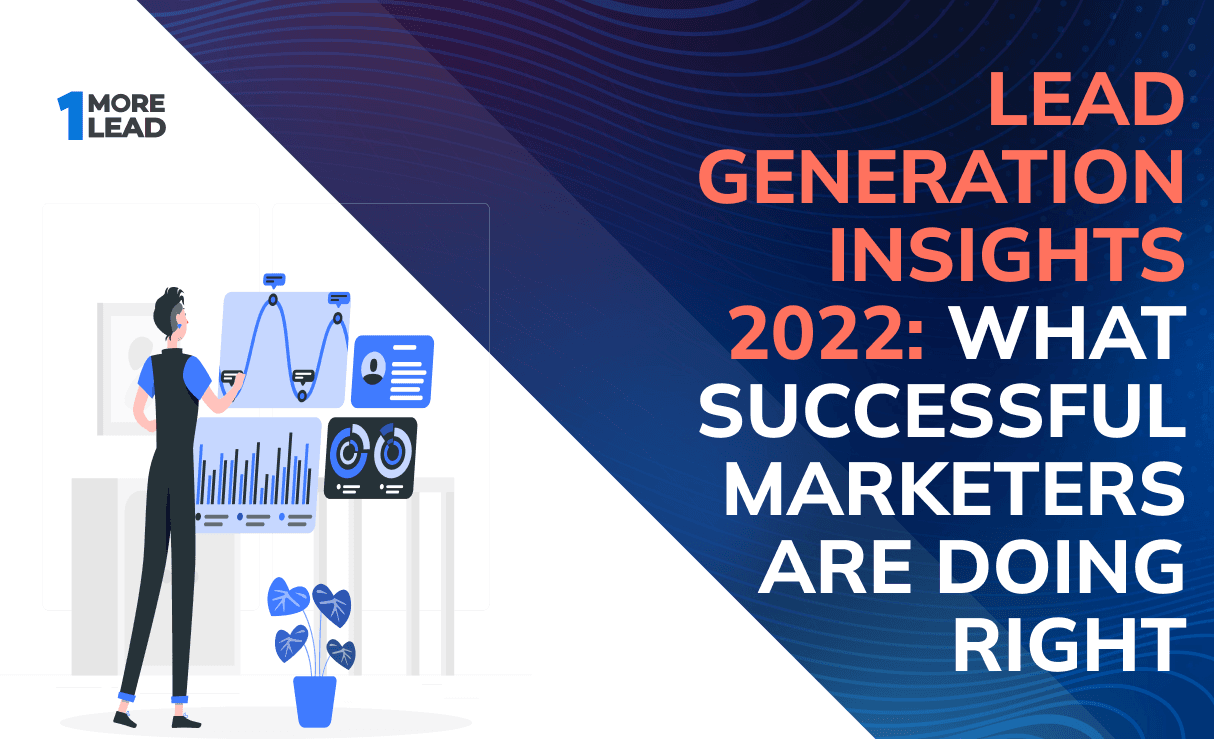
A Lead is a potential customer who might be interested in your product or service, and lead generation is the process of converting this potential customer to an actual one.
Lead generation has always been a focal point for marketers. But with changing consumer behavior and advancements in technology, it’s getting harder every year to maintain lead generation success.

Successful marketers know what to prioritize and what to avoid when it comes to generating quality leads. In this article, we’ve compiled lead generation statistics and insights for you to make better decisions and improve your lead generation efforts.
According to an eMarketer study, generating quality leads is the primary focus of 79% of marketers worldwide. It ranks ahead of web traffic (75%), brand reputation (57%), and customer engagement (47%).
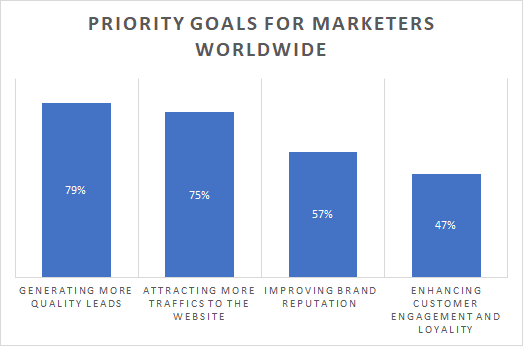
In a separate study, 44% of marketers identified "Better measure the ROI of our demand generation initiatives" as their topmost priority. (Demand Gen Report) While a HubSpot study also concludes that lead generation is the top priority for marketers worldwide.
So now that we know that lead generation should be your first priority as a marketer, let’s take a look at what strategies can make it a success.
Demand Generation Report noted that events (68%) were the most effective at generating leads. This was followed by webinars (61%), campaigns, white papers (50%), and case studies (50%).

But the COVID-19 pandemic had shifted consumer activity onto the digital landscape, which resulted in webinars taking the top spot in 202 as the most effective lead generation channel.
More than half (53%) of marketers have admitted webinars to be the top-of-the-funnel format that generates the most high-quality leads. (Demand Gen Report)
As we try to adapt to a post-pandemic world, marketers can take a hybrid approach, incorporating both in-person events and webinars in their lead generation strategies.
A study by Chief Marketers found email marketing to be the most effective lead generation strategy to achieve ROI. In fact, 50% of the marketers agreed that email was their go-to channel when it comes to generating a healthy ROI.
The findings are consistent with other studies that found more than half (53%) of marketers choose email as the most effective channel for early-stage lead generation. (Demand Gen Report, 2022)
This goes against the popular belief that email marketing is “dead”. In reality, while email marketing has evolved as a marketing strategy, it’s far from being dead.
SEO (43%) and content marketing (34%) take the next two spots of the most effective lead generation strategies, followed by live events (32%) and social media (23%)
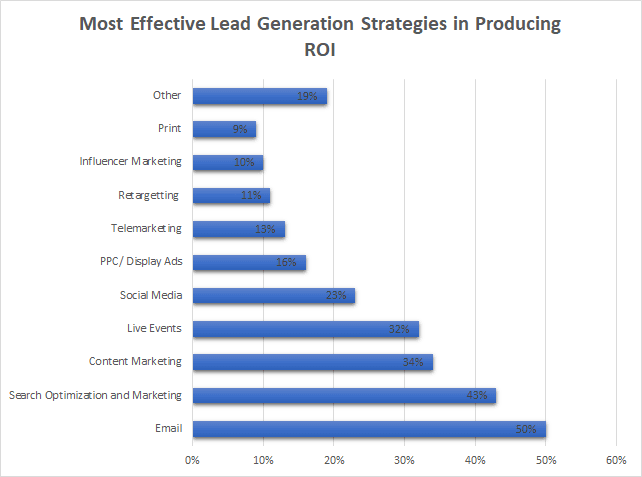
In the B2B arena, once again, email marketing (78%) takes the spot as the primary lead generation channel for businesses worldwide, followed by event marketing (73%) and content marketing (67%). (khrisdigital, 2022)
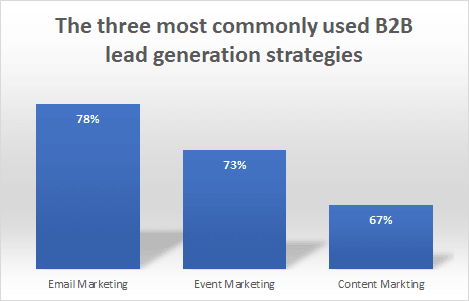
This can be a lesson for marketers for trusting the data, and not blindly follow popular beliefs. Optimizing your email marketing campaigns can still offer you the easiest path to maximizing your ROI from lead generation.
According to a study by LeadG2, generating high-quality leads is the toughest lead generation challenge faced by marketers. A whopping 43% of marketers say that ensuring the quality of their leads is the hardest part of lead generation.
This indicates that successful marketers should be prioritizing quality over quantity when it comes to lead generation. Indeed, high-quality leads put you in a better position and make the process of guiding them to conversions much easier.
Generating high-volume leads is next up on the list with 35% of marketers considering the number of leads a big issue for lead generation. This is crucial, as the quality of leads won’t matter if you can’t even find leads in the first place.
The lack of time or resources comes next on the list with 25%. Other studies have confirmed this to be a massive challenge in lead generation.
A study by CSO Insight reported that 42% of sales reps feel that they don’t have the right information before making a call. Another study by Ascend2 notes that 35% of survey respondents identify lack of quality data to be their biggest barrier to lead generation success.
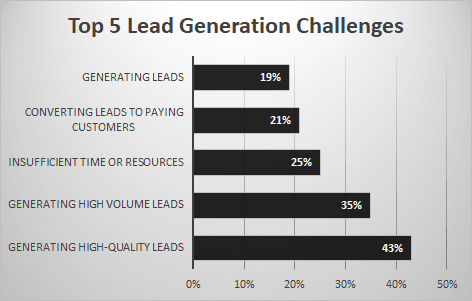
The fourth and fifth challenge on the list is converting leads to customers (21%) and generating leads (19%). While these are genuine concerns, you can address them by resolving the top 3 challenges - ensuring quality and quantity of leads and making the lead generation process efficient by gathering enough data.
Get your lead generation efforts up and running with OneMoreLead. Sign up today and start building lists that convert!